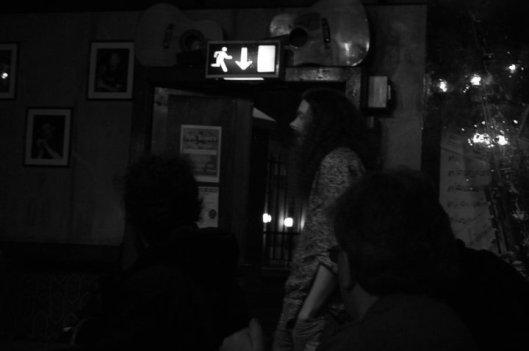An old post from an old blog given new life…
In 2010 started learning folk songs more seriously, which rekindled my interest in the idea of the ‘golden moment’ in music.
I remember first hearing the ancient song King Orfeo sung on Alan Lomax’s Classic Ballads of Britain and Ireland, collected between 1949 and 1969. Click on foregoing link to listen to it: it is sung by John Stickie, an elderly man whose frail, thin voice would have had you believe he was a close relative of the Sibyl of Cumae.
The song itself is incredible – full of rich imagery: here is a powerful myth seen through the lens of Celtic culture via the medieval English poem Sir Orfeo. Notably, the Classical Pluto is replaced by the Celtic king of fairies and the story has a happy ending! The opening lines “There lived a king into the east […] there lived a lady in the west” resonate deeply with me and I’m sure many a Hermetic interpretation could be made along these lines (for example: in the correspondence systems popularised by Agrippa east being associated with sunrise and Mars, the west with Venus).
However, what I loved most about hearing this song was the rhythm: very consistent, until the moment that Orpheus plays the magic song: “the good old gabber reel.” The additional syllables in this line seem to make it stand out like a jewel, and the delivery in the recording of John Stickie powerfully suggested that something otherworldly or magical had occurred: a magic act momentarily transcended the temporal, rhythmic world of the song.
This takes me back to what I find moving in the tintinnabuli-style music of Arvo Part, to whom I seem to return to again and again. There are often long periods of rhythmic and tonal stasis and then something happens that gloriously transcends it: a many-syllabled word ascends toward heaven; or something occurs outside the prescribed tonality that touches the heart in some unknown way as in the example below from Alinale (1976), where the left hand plays a single note outside the B-minor triad that comprises all the other material in that voice (marked by a flower and pedal release in the score).

Extract from Alinale (1976)
While on holiday in the village of Littlebeck in the early days of summer 2009 I met the golden moment again. I wrote a piece of string music entitled Funeral Music for John D., both as a tribute to John Dowland (the piece was structured like one of his Lachrimae pavans), and to John Dee (the tonalities used in the piece derived from his Hieroglyphic Monad). While Funeral Music was generally not the most interesting or conventionally harmonious composition, three quarters of the way through a sustained, highly harmonic chord suddenly appears after a moment of silence. To my ears the effect was magical, as though the vault of heaven was suddenly cast wide, flooding the earth with celestial light. The chord in question was more recently used as the basis for The Littlebeck Trisagion recordings on the forthcoming Three Spirits album.

The vault of heaven cast wide…
Until then, and to return to King Orfeo, here is a bootleg from our Institute of Stone Age Sex performance at the back in spring. This was fairly early days for the current line-up, and unfortunately I didn’t get a chance to break out of the rhythm for a golden ‘good old gabber reel’ moment, but it should give a vague idea about of the droning, semi-improvised sound of IOSAS! It was, regrettably, recorded on the only available technology: the ubiquitous mobile phone, and is occasionally somewhat muddy on the vocal front. More polished performances and recordings will hopefully be along in 2013!
https://soundcloud.com/phil-legard/institute-of-stone-age-sex



While I am not a musician, I have recognized my entire conscious life the profound effect that music has upon me. It can alter my mood quicker than any drug could dream. I have found this post most interesting and enlightening. Listening to John Stickie I am reminded of something familiar, something long forgotten, something lurking at the edges of the mind like the shadow seen out the corner of the eye that only disappears when looked at directly. I think I know what you mean when you speak of the golden moment. I do experience something like that in music made by man but more often it occurs in the sound made by water flowing over rock or the sudden rush of sound made on a still day when a breeze sends the tree branches clicking and clacking or in the sound of distant rolling thunder. We may be illuminated at any moment by the simplest, most unexpected things?
On the Institute of Stone Age Sex performance of yours linked above, you use words like, regrettably, ubiquitous and muddy and hope for more polish…well, I recognize the artists desire for betterment, but. I have listened to it probably more than two dozen times now, back to back. What I hear is pure and real. It resonates within me and warms me to my very heart. I swim in it like a trout in the brook. I would like nothing more than to have a recording of this, just as it is on a cd. When I am permanently set free of this flesh and my carcass is fed into the fire I would like nothing more than for this to be playing.
Pingback: The Turning Year « Larkfall